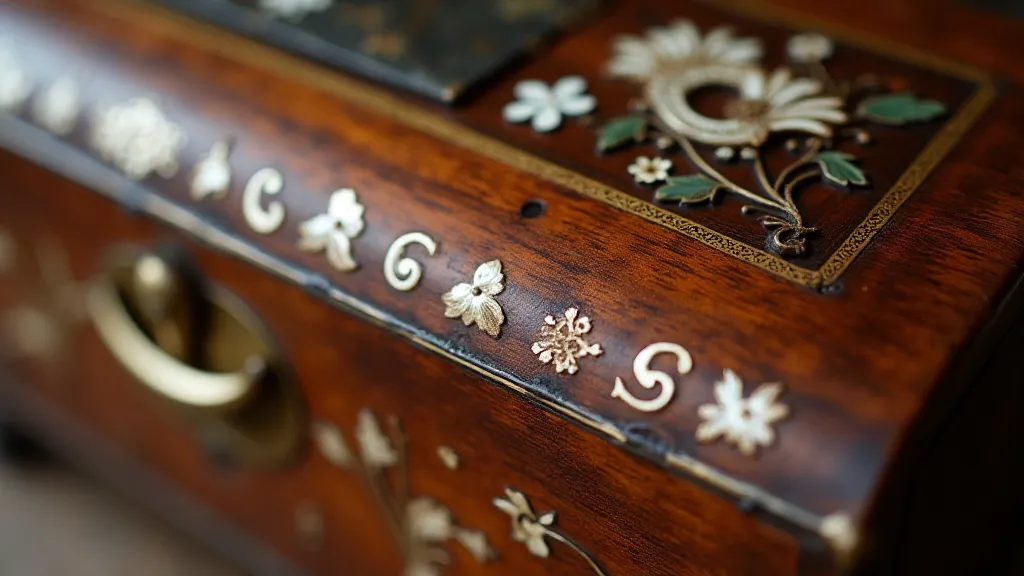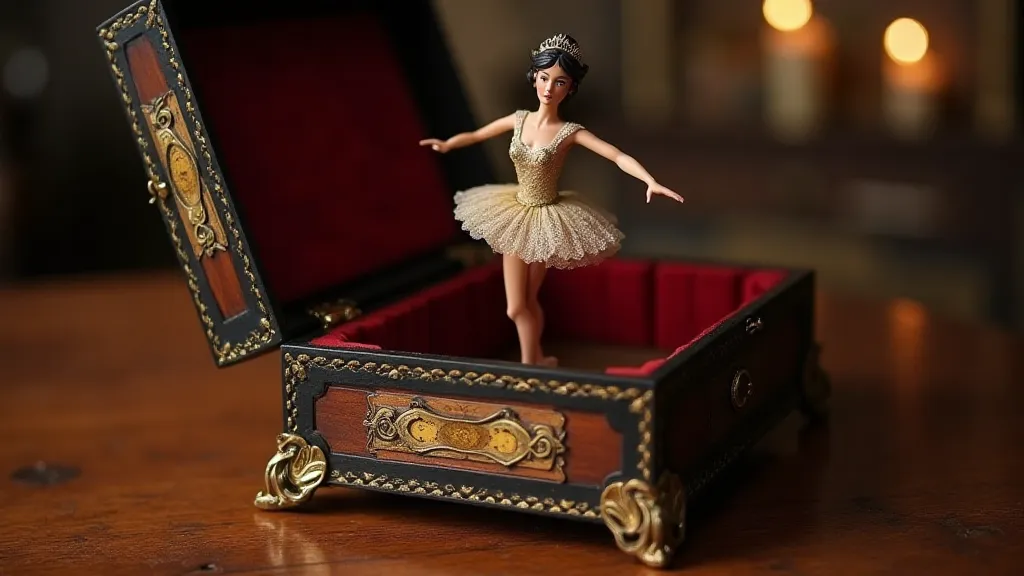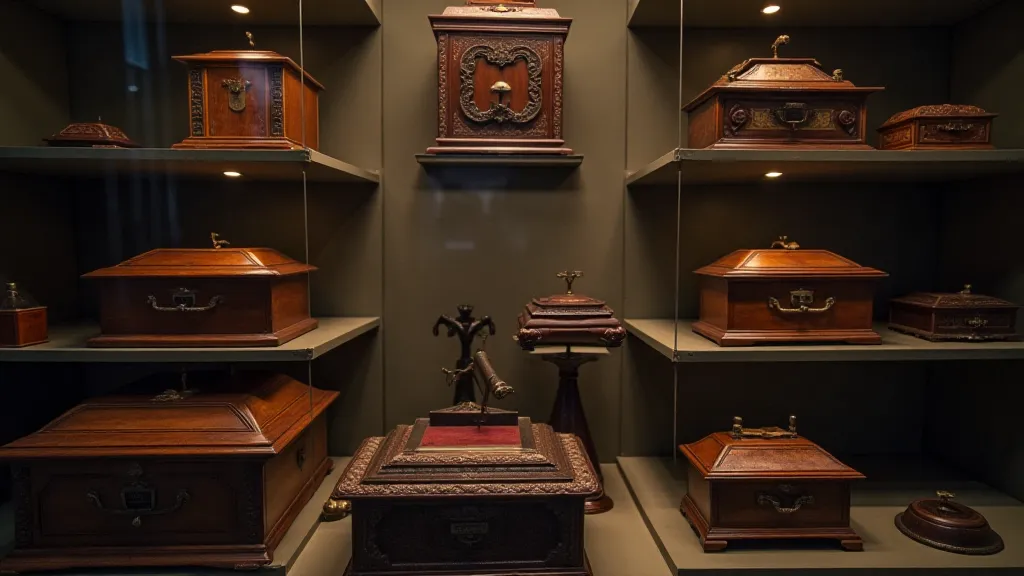The Gilded Cage: Exploring the Social Class and Status Symbolism of Music Boxes
There’s a particular magic that settles over a room when an antique music box begins to play. It's not simply the melody—though those delicate, tinkling tunes often evoke cherished memories—but something deeper. It's a whisper of a bygone era, a glimpse into a world of refined sensibilities and demonstrable wealth. These weren’t merely toys; they were statements. They were the “gilded cages” of their time, exquisitely crafted symbols of social standing and undeniable luxury.
My grandmother, Eleanor, possessed a particularly stunning cylinder music box. It was a small, dark mahogany affair, inlaid with mother-of-pearl. When I was a child, she’d let me wind it up, the feel of the cool metal surprisingly heavy in my small hands. The melody, "Lohengrin’s Wedding March," would fill the room, transporting me to a world of grand ballrooms and opulent gowns. Even then, I sensed it wasn’t just about the music; it was about *who* had the privilege of experiencing it. It was a secret language spoken between generations of women, a legacy of elegance.
The Rise of the Music Box: A Symphony of Status
The story of antique music boxes is inextricably linked to the rise of the middle class in the 19th century. Before their widespread production, musical entertainment was largely confined to the wealthy elite. Orchestras and pianists were hired for private performances, a luxury few could afford. The invention of the automated musical device changed that, albeit initially in a limited way. The earliest examples, largely attributed to the Swiss clockmakers, emerged in the late 18th century, adapting existing clock-making technologies to create automated music-playing mechanisms. These weren't mass-produced; they were bespoke creations, hand-crafted and expensive.
Early music boxes weren't just mechanisms; they were works of art. The intricate cylinder mechanism, punched with tiny pins to activate the tuned metal prongs, was often housed in elaborately carved wooden cases. Ebony, rosewood, and later, exotic woods like amboyna, were common choices, often adorned with exquisite inlays of precious metals, gemstones, and mother-of-pearl. The quality of the materials and the artistry of the craftsmanship directly reflected the owner's wealth and refinement. Owning such a creation wasn't merely about enjoying music; it was about demonstrating one's taste and discerning eye.

From Parlor to Possession: A Marker of Refinement
During the Victorian era, music boxes became increasingly popular within the burgeoning middle class, particularly among women. Parlors – dedicated rooms for entertaining – were considered essential for a respectable household, and a music box was a prime decorative piece. It signified a level of prosperity that allowed for leisure and the enjoyment of fine arts. The music itself was also curated for sophistication. Classical pieces, operatic excerpts, and popular songs of the day were chosen not only for their musical merit, but also to signal the owner’s cultural literacy.
The types of music boxes varied widely, reflecting different price points and intended audiences. Simple, smaller boxes, often made of less expensive woods, were accessible to a broader segment of the middle class, but the more elaborate, large-scale pieces with automata – moving figures that accompanied the music – remained firmly within the domain of the wealthy and aristocratic.
Beyond the parlor, music boxes also served as cherished gifts. A young woman might receive one from a suitor to express his affection and financial stability. A wealthy family might give a music box to a daughter graduating from finishing school, a symbolic passing of the torch and an affirmation of her place within their social standing. These weren’t fleeting gifts; they were heirloom pieces intended to be treasured for generations.
The Cylinder vs. Disc: Variations in Value and Status
The evolution of music box technology also influenced their social standing. Early music boxes primarily employed cylinder mechanisms, which produced a continuous loop of music. Later, disc music boxes emerged, capable of playing a wider repertoire of songs. While disc music boxes eventually became more common, the older cylinder boxes, particularly those crafted with exceptional artistry, often command higher prices among collectors today precisely because of their historical significance and the implied level of investment in their creation.
Furthermore, the presence of automata – tiny, automated figures that perform actions synchronized with the music – dramatically increased the price and perceived status of a music box. These elaborate creations required a skilled craftsman to design and execute the mechanical movements, making them incredibly rare and highly sought after. A music box featuring a dancing ballerina or a miniature band was a clear indication of substantial wealth and an appreciation for the artistry of mechanical engineering.

Decline and Legacy: Preserving a Musical Heritage
The popularity of music boxes began to wane in the early 20th century, largely due to the rise of phonographs and the increasing affordability of recorded music. Mass production also diminished the perceived value of individually crafted pieces. However, the legacy of these intricate creations endures. Today, antique music boxes are highly prized by collectors, not only for their musicality but also for their historical significance and artistic merit.
Restoration of antique music boxes is a delicate process. The original mechanisms are incredibly intricate, and any attempt to repair or replace parts requires a skilled craftsman with a deep understanding of horological principles. Preserving the original finish and materials is paramount to maintaining the box’s authenticity and value. While complete restoration can be costly, even a basic cleaning and lubrication can breathe new life into a neglected piece, allowing its melodies to resonate once again.
Collecting antique music boxes isn’t simply about acquiring objects; it’s about connecting with a bygone era, appreciating the artistry of skilled craftsmen, and understanding the cultural significance of these exquisite creations. Each music box tells a story - a silent testament to a time when elegance, refinement, and demonstrable wealth were tangible expressions of social standing. It’s a “gilded cage” perhaps, but one that holds a wealth of history and a symphony of charm.






